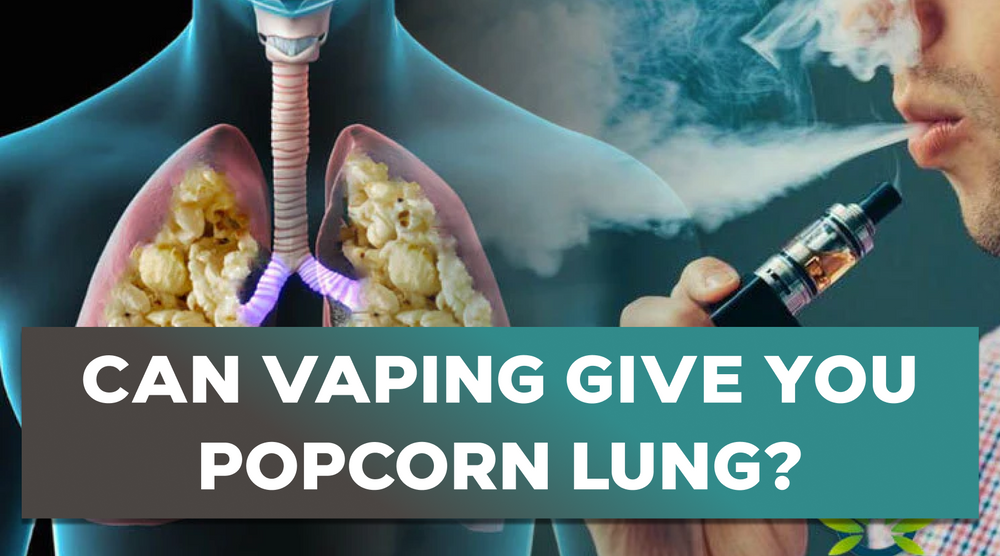
What is Popcorn Lung?
Share
One of the most common misconceptions about vaping is the phenomenon known as "popcorn lung." Obliterative bronchiolitis is the condition that causes damage to the smallest airways in the lungs and reduces their capacity and efficiency, which is what this common term actually refers to. Infection, inflammation, and the inhalation of certain chemicals like chlorine, ammonia, and metal fumes are all potential causes of popcorn lung. Other environmental and medical factors can also play a role. Anti-vaping advocates continue to insist that vaping is the main cause of popcorn lung despite all of these known causes.
Popcorn lung symptoms
It can be hard to figure out how to know if you have popcorn lung. Because popcorn lung causes scarring in the lungs, it can have a range of effects on the body, including:
- Shortness of breath
- Short, dry cough
- Wheezing (without the presence of asthma or a cold)
- Reduced tolerance for physical activities
- Fatigue
Clearly, popcorn lung is not the only cause of these symptoms, which are extremely uncommon. It's possible that a person with popcorn lung symptoms has a common cold. However, if these symptoms persist for several weeks or get worse rather than better, they should be cause for concern. Eventually, popcorn lung gets worse, making it hard to breathe and take in oxygen; It can be fatal within months if left untreated. There is no known fix, yet there are medicines that can slow the movement, like anti-toxins or corticosteroids.
What is diacetyl?
Diacetyl is the chemical often blamed for popcorn lung. It is a natural compound tracked down in aged items, like liquor, tobacco, and refined milk items. It is frequently used in the food industry to give foods a buttery flavor or make sweet foods taste better. Although diacetyl is "generally recognized as safe" according to the FDA, it can cause irreversible damage to the lungs if inhaled in large quantities.
What does diacetyl have to do with vaping?
Diacetyl is present in some vape juices, but it is becoming much less common. The vast majority of today's vape manufacturers have developed delicious diacetyl-free e-juice. Rich, sweet flavors (like custard) are the ones probably going to contain the synthetic; It may also be present in some vape juice with a tobacco or fruit flavor, but this is less likely.
The discussion around diacetyl and vaping is the same old thing, however, it was only after 2014 that a cardiologist named Konstantinos Farsalinos and a portion of his partners tended to the concerns scientifically. These scientists considered diacetyl "an avoidable gamble," provoking numerous vape organizations to change their equations. But keep in mind that not all companies did this, and many vapers happily vape diacetyl-containing e-liquids without any problems.
Can vaping cause popcorn lung?
Despite the rumors, no case of popcorn lung has been found to have been caused by vaping. Think about this: tobacco smoke contains 100 fold the amount of diacetyl as any vape item (or more), yet smoking isn't being faulted for popcorn lung. With the exception of those who inhaled greater amounts of diacetyl in another setting, such as at work, none of the world's smokers have developed popcorn lung.
Most importantly assuming you are stressed over vaping and popcorn lung, you shouldn't be. How much diacetyl found in some e-fluid is little to the point that it would be practically outside the realm of possibilities for it to cause this condition. Obviously, research proceeds, however most vapers can unwind and continue to partake in their vape whenever they like.
